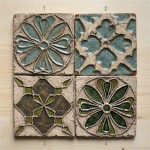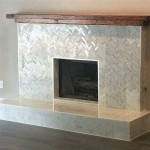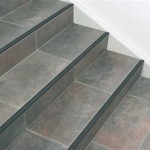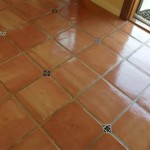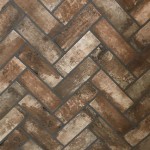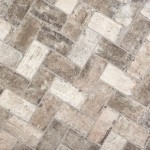How To Prepare Cement Board For Tile
Cement board, also known as cement backer board or tile backer board, is a durable and water-resistant material utilized as a substrate for tile installations in areas exposed to moisture, such as bathrooms, kitchens, and laundry rooms. Proper preparation of cement board is crucial for a successful tile installation. Inadequate preparation can lead to tile cracking, loosening, or even complete failure. This article provides a comprehensive guide on how to effectively prepare cement board for tiling, ensuring a long-lasting and aesthetically pleasing result.
The preparation process involves several key steps, including cutting and installing the cement board, taping and mudding the seams, and applying a suitable primer or sealant. Each step contributes to the overall stability and water resistance of the surface, creating an ideal foundation for tile adhesion. Neglecting any of these steps can compromise the integrity of the installation and necessitate costly repairs in the future.
Cutting and Installing Cement Board
The initial step in preparing cement board for tile involves accurately measuring and cutting the panels to fit the designated area. Cement board is typically available in standard sizes, such as 3' x 5' and 4' x 8', but may require cutting to accommodate specific dimensions and architectural features. Accurate measurements are essential to minimize waste and ensure a seamless installation.
There are several methods for cutting cement board, each with its own advantages and disadvantages. The most common methods include scoring and snapping, using a utility knife with a carbide-tipped scoring blade, and employing a power saw with a diamond blade. The scoring and snapping method is often preferred for straight cuts, while a power saw provides greater precision for intricate shapes and curves. Regardless of the chosen method, safety precautions, such as wearing safety glasses and a dust mask, are essential to protect against dust and debris.
Once the cement board is cut to size, it must be securely fastened to the underlying framing. The framing should be structurally sound and level to provide a stable base for the cement board and tile. Wood or metal studs spaced at 16 inches on center are generally recommended for optimal support. The cement board should be attached to the framing using cement board screws specifically designed for this purpose. These screws are corrosion-resistant and feature a countersinking head that allows them to be driven flush with the surface of the board.
It is crucial to space the screws appropriately, typically every 6 to 8 inches along the edges and every 8 to 12 inches in the field of the board. Over-driving the screws can damage the cement board and compromise its integrity, while under-driving them can create unevenness and potential tile adhesion issues. A screw gun with a depth control setting can help ensure consistent screw depth and prevent damage to the cement board. Proper screw placement and spacing are vital for creating a rigid and stable substrate that can withstand the weight of the tile and the stresses of daily use.
When installing cement board, it is important to leave a small gap, approximately 1/8 inch, between the panels. This gap allows for expansion and contraction of the materials, preventing cracking and buckling. The gaps will be filled later during the taping and mudding process. Additionally, ensure that the cement board is flush with the surrounding surfaces, such as drywall, to create a smooth transition. Shimming or furring strips may be necessary to achieve a level plane. A level and consistent surface is crucial for achieving a professional-looking tile installation.
Taping and Mudding the Seams
After the cement board is securely fastened to the framing, the seams between the panels must be taped and mudded to create a seamless and waterproof surface. This step is essential for preventing moisture from penetrating the substrate and damaging the framing behind it. The taping and mudding process involves applying a specialized fiberglass mesh tape to the seams and coating it with a thin-set mortar or joint compound designed for cement board.
Begin by cleaning the seams and removing any loose debris or dust. This ensures proper adhesion of the tape and mortar. Pre-filling large gaps or imperfections with a setting-type joint compound is also recommended. This provides a solid base for the tape and prevents cracking of the mortar. Apply the fiberglass mesh tape directly over the seams, pressing it firmly into place. Ensure that the tape is centered over the seam and extends evenly on both sides.
Next, mix a small batch of thin-set mortar or joint compound according to the manufacturer's instructions. Consistency is key; the mortar should be smooth and creamy, resembling the texture of peanut butter. Using a taping knife or putty knife, apply a thin coat of mortar over the tape, embedding it completely. Feather the edges of the mortar to create a smooth transition between the taped seam and the surrounding cement board. Avoid applying too much mortar in a single coat, as this can lead to cracking and shrinkage.
Allow the first coat of mortar to dry completely, typically for 24 hours. Once dry, sand the surface lightly to remove any imperfections or ridges. Apply a second coat of mortar, again feathering the edges to create a smooth and seamless surface. This second coat provides additional strength and water resistance. Allow the second coat to dry thoroughly before proceeding to the next step. Inspect the seams carefully for any cracks or imperfections and repair them as needed. A properly taped and mudded seam should be smooth, strong, and waterproof.
In addition to taping and mudding the seams, it is also recommended to apply a thin coat of mortar over the screw heads. This prevents the screw heads from rusting and causing discoloration of the tile grout. Use the same thin-set mortar or joint compound used for taping and mudding the seams. Apply a small amount of mortar over each screw head, ensuring that it is completely covered. Feather the edges of the mortar to create a smooth transition. Allow the mortar to dry completely before proceeding. This small step can significantly improve the longevity and appearance of the tile installation.
Priming or Sealing the Cement Board
The final step in preparing cement board for tile involves applying a suitable primer or sealant to the surface. Priming or sealing the cement board helps to improve tile adhesion, reduce moisture absorption, and prevent the migration of salts and minerals from the cement board to the tile grout. This step is particularly important in areas exposed to high levels of moisture, such as shower walls and floors.
There are several types of primers and sealants available specifically designed for cement board. Acrylic latex primers are a popular choice for their ease of application and versatility. They provide a good bond for most types of tile adhesives and help to seal the surface of the cement board. Epoxy-based primers offer superior water resistance and are often recommended for demanding applications, such as shower floors. Always consult the tile adhesive manufacturer's recommendations to ensure compatibility with the chosen primer or sealant.
Before applying the primer or sealant, ensure that the cement board surface is clean, dry, and free of any dust or debris. Use a vacuum cleaner or damp cloth to remove any loose particles. Apply the primer or sealant according to the manufacturer's instructions, typically using a brush, roller, or sprayer. Apply a thin, even coat, avoiding pooling or drips. Allow the primer or sealant to dry completely before proceeding to the tile installation. Drying times vary depending on the product and environmental conditions.
For areas exposed to constant moisture, such as shower stalls, consider applying multiple coats of primer or sealant for added protection. Follow the manufacturer's recommendations for the number of coats and drying times. Pay particular attention to the seams and corners, ensuring that they are thoroughly sealed. A properly primed or sealed cement board surface will provide a durable and waterproof base for the tile installation, preventing moisture damage and ensuring long-term performance.
In summary, proper preparation of cement board is essential for a successful and long-lasting tile installation. The process involves accurately cutting and installing the cement board, taping and mudding the seams, and applying a suitable primer or sealant. Each step contributes to the overall stability, water resistance, and adhesion of the tile. By following these guidelines, installers can create a professional-quality tile installation that will withstand the test of time.

How To Install Cement Board The Home Depot

How To Prepare Cement Backer Board For Tile Make It Waterproof

Durock Cement Board Do S And Dont

How To Install Cement Board For Tile Projects Diy Family Handyman

How To Install Cement Board For Tile Projects Diy Family Handyman

How To Install Cement Board Tile Underlayment Hardiebacker

Installing Cement Board In The Bathroom

How To Install Cement Board Cbu For Floor Tile

The Best Way To Waterproof Your Shower Before Tiling Inspired Hive

Installing Cement Board In The Bathroom
Related Posts

